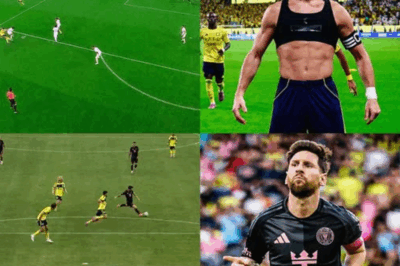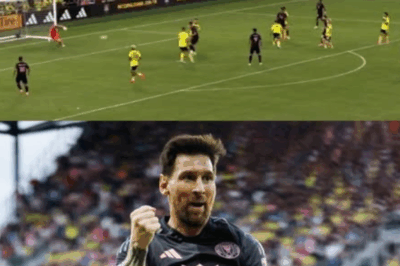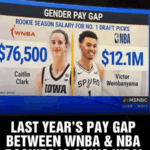The Disparity in Pay: Why WNBA Players Earn 15 Times Less Than NBA Stars
In the world of professional sports, the NBA stands as a towering symbol of athletic excellence, commercial success, and global influence.
Its players are household names, earning millions of dollars annually, securing lucrative endorsement deals, and enjoying a level of fame that transcends sports.
However, beneath this glittering facade lies a stark contrast: WNBA players, despite their incredible talent, dedication, and the vital role they play in women’s sports, earn a fraction of what their NBA counterparts make.
In fact, recent analyses suggest that WNBA players earn approximately 15 times less than NBA stars.
This glaring disparity raises critical questions about gender equity in sports, the economics of professional basketball, and the broader societal values that influence how female athletes are compensated.
To understand this complex issue, we need to delve into the history, economics, cultural perceptions, and future prospects of women’s professional basketball.
The Historical Context of Women’s Basketball
Women’s basketball has a rich history that predates the establishment of the WNBA by several decades. The sport gained popularity in the early 20th century, with women’s basketball leagues forming as early as the 1890s.
However, it was not until the late 20th century that the sport gained significant traction, culminating in the founding of the WNBA in 1996 as a professional league dedicated to women.
Despite the league’s efforts to elevate women’s basketball, it has faced numerous challenges—most notably, financial sustainability and media coverage.
Unlike the NBA, which has become a global entertainment giant, the WNBA remains a niche sport with a dedicated but comparatively small following. This has profound implications for revenue generation, which directly impacts player salaries.
The Economics of the NBA and WNBA
At the heart of the salary disparity is the fundamental difference in revenue streams.
The NBA generates billions of dollars annually through ticket sales, merchandise, television rights, sponsorships, and global branding.
The league’s massive popularity translates into lucrative broadcasting deals, with national TV contracts worth hundreds of millions of dollars each year.
These revenues allow NBA teams to pay their players substantial salaries, with the average NBA player earning over $7 million per year, and the top stars making well over $40 million annually.
In contrast, the WNBA’s revenue is significantly lower. The league’s annual revenue is estimated to be around $60 million, a fraction of the NBA’s income.
This lower revenue limits the amount of money available for player salaries. The WNBA’s television contracts, sponsorships, and ticket sales do not come close to matching those of the NBA, which directly impacts the league’s ability to pay its players.
Salary Structures and Contracts
The salary structures in the NBA and WNBA reflect these economic realities.
NBA players negotiate contracts that often include multi-year deals worth tens of millions of dollars, along with lucrative endorsement opportunities.
The league’s salary cap, which limits the total amount each team can spend on player salaries, is set at around $136 million per team for the 2023-2024 season. This cap enables teams to build competitive rosters while offering high salaries to star players.
Meanwhile, the WNBA operates under a much lower salary cap. For the 2023 season, the cap was approximately $1.4 million per team, with individual maximum salaries for star players around $230,000.
These figures are a far cry from NBA salaries and reflect the league’s limited revenue base. Many WNBA players supplement their income by playing overseas during the offseason, where they can earn significantly more.
The 15x Salary Gap
When comparing the average earnings of NBA and WNBA players, the disparity becomes starkly evident.
Top NBA stars like LeBron James, Stephen Curry, and Kevin Durant earn tens of millions annually, while the average WNBA player earns less than $100,000 per year.
Even the highest-paid WNBA players, who earn around $230,000 from the league, often see their total income boosted through overseas contracts and endorsement deals, but these are still modest compared to NBA salaries.
This means that, on average, WNBA players earn roughly 1/15th of what NBA players make—a staggering gap that underscores the economic challenges facing women’s professional basketball.
Media Coverage and Sponsorship

Media coverage plays a crucial role in shaping public perception and generating revenue for sports leagues.
The NBA commands extensive television coverage, with games broadcast nationally and internationally, attracting millions of viewers.
This visibility translates into lucrative advertising deals and sponsorships, further fueling the league’s revenue growth.
In contrast, the WNBA struggles with limited media exposure. Although the league has made strides in recent years, its games are often relegated to niche channels or streaming platforms.
This limited visibility hampers the league’s ability to attract major sponsorship deals and expand its fan base.
Without widespread media coverage, the WNBA cannot generate the same level of revenue as the NBA, which directly impacts player salaries.
The cycle of limited exposure and lower salaries perpetuates the challenge of attracting top-tier talent and growing the league’s popularity.
The Impact of Gender Disparities
The salary gap between WNBA and NBA players is emblematic of broader gender disparities in sports and society.
Historically, women’s sports have received less investment, media attention, and sponsorship support than men’s sports. This has contributed to a cycle where female athletes are undervalued and underpaid.
Many WNBA players have spoken out about the need for greater recognition and fair compensation.
They argue that their talent, hard work, and contributions to the sport deserve acknowledgment comparable to that of male athletes.
The disparity also affects the ability of female athletes to pursue basketball as a sustainable career, often forcing them to seek overseas opportunities to make a living.
The Role of Sponsorship and Endorsements
Endorsement deals can significantly supplement a player’s income, especially for high-profile athletes.
NBA stars often sign multi-million-dollar endorsement contracts with global brands like Nike, Adidas, and Pepsi. These endorsements not only boost their income but also elevate their status as global icons.
For WNBA players, endorsement opportunities are more limited. While some stars have secured deals with major brands, the overall market for women’s sports endorsements is smaller.
This limits the earning potential of female athletes and reinforces the economic gap.
The Future of WNBA Salaries
Addressing the salary disparity requires a multifaceted approach involving league management, sponsors, broadcasters, and society at large. Some potential solutions include:
Increasing Revenue Streams: Expanding media coverage, securing better broadcasting deals, and attracting more sponsorships can boost league revenue, enabling higher salaries.
Investment and Support: Public and private investments in women’s sports can help grow the league’s popularity and financial stability.
Equity Initiatives: Implementing policies that promote pay equity and support female athletes’ rights can help close the gender gap.
Global Opportunities: Encouraging and facilitating overseas contracts can provide additional income streams for WNBA players.
Conclusion
The fact that WNBA players earn approximately 15 times less than their NBA counterparts highlights a significant inequality rooted in economic, cultural, and societal factors.
While the disparities are substantial, they also present an opportunity for change.
As awareness grows and societal attitudes toward women’s sports evolve, there is hope that the financial gap will narrow, allowing female athletes to earn fair compensation commensurate with their talent and dedication.
In the meantime, advocates, players, and fans continue to push for greater recognition and support for women’s basketball.
Achieving pay equity is not just about dollars and cents; it is about valuing talent, dedication, and the power of women’s sports to inspire millions around the world.
News
Arsenal’s Defensive Wall in the Premier League: An In-Depth Numerical Analysis
Arsenal’s Defensive Wall in the Premier League: An In-Depth Numerical Analysis In the fiercely competitive landscape of the Premier League,…
The secret is OUT. You will NEVER guess who’s taking over for Ryan Seacrest. The clue is RIGHT THERE!
The secret is OUT. You will NEVER guess who’s taking over for Ryan Seacrest. The clue is RIGHT THERE! The…
Cristiano Ronaldo Approaching 41: A Legendary Career Defined by Unstoppable Long-Range Goals and Unmatched Dedication
Cristiano Ronaldo Approaching 41: A Legendary Career Defined by Unstoppable Long-Range Goals and Unmatched Dedication As the football world continues…
The secret is OUT. Vanna White’s 12-year romance has a shocking twist that explains everything. Her reason for refusing to wed will leave you speechless. You have to hear this!
The secret is OUT. Vanna White’s 12-year romance has a shocking twist that explains everything. Her reason for refusing to…
A’ja Wilson Channels Michael Jordan’s Iconic Style for Her Championship Look: A Modern Take on a Legendary Legacy
A’ja Wilson Channels Michael Jordan’s Iconic Style for Her Championship Look: A Modern Take on a Legendary Legacy In the…
Unparalleled Performance on the Field: A Hat Trick, an Assist, and a Flawless 10/10 Score for the GOAT
Unparalleled Performance on the Field: A Hat Trick, an Assist, and a Flawless 10/10 Score for the GOAT In the…
End of content
No more pages to load












